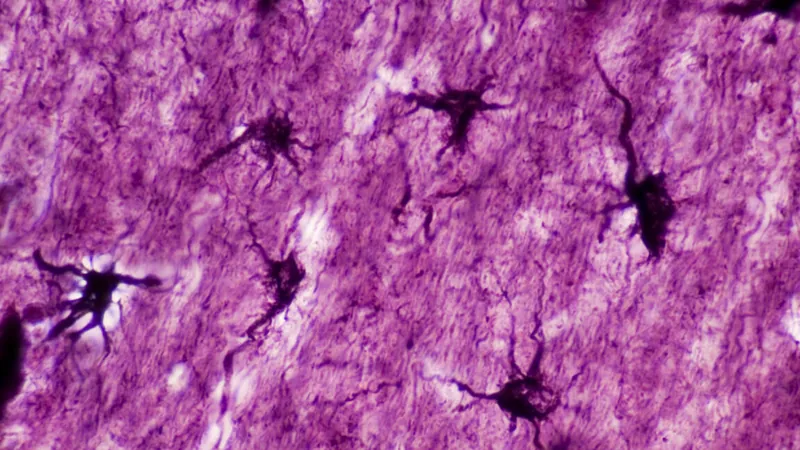
Groundbreaking Frontier Supercomputer Simulation Sets New Standards for Cosmic Research
2024-11-25
Author: Li
Revolutionizing Astrophysics Through Exascale Computing
In an incredible leap forward for astrophysics, researchers have successfully conducted the largest astrophysical simulation of the universe using the Frontier supercomputer at Oak Ridge National Laboratory (ORNL) in early November. This monumental achievement marks a significant milestone in the realm of computer simulations, pushing the boundaries of our understanding of the cosmos into the exascale era.
Understanding Cosmic Evolution
The simulation, part of the cosmological hydrodynamics research, delves into the intricate interplay between conventional matter—what we traditionally think of as 'real' matter—and the elusive dark matter. Salman Habib, the project lead and division director for Computational Sciences at Argonne National Laboratory, emphasized the necessity of simulating these two components to better comprehend the universe's evolution. He noted, "If we want to know what the universe is up to, we need to simulate both dark and atomic matter along with gravity and the dynamics of hot gas and star formations."
The Power of HACC
This extensive simulation is not only a remarkable culmination of years of research and development but also a testament to the capabilities of the HACC (Hardware/Hybrid Accelerated Cosmology Code). Originally developed for petascale computers around 15 years ago, HACC underwent extensive upgrades through the ExaSky initiative, part of the Exascale Computing Project (ECP). This project concentrated on equipping codes to function 50 times faster than on previous leading supercomputers. Astonishingly, HACC has achieved performance nearly 300 times faster than earlier simulations, all thanks to its optimization for the AMD Instinct MI250X GPUs of the Frontier supercomputer.
Impressive Computational Scale
The Frontier simulation utilized approximately 9,000 compute nodes, leading to groundbreaking discoveries that align with observations from powerful telescope surveys like the Rubin Observatory in Chile. This scale of simulation—which encompassed billions of years of cosmic evolution—previously eluded researchers due to computational constraints.
Recognizing Team Efforts
Among the honorees in this monumental project were team members such as Michael Buehlmann, JD Emberson, and Katrin Heitmann, who contributed their expertise to achieve these exceptional results. Notably, prior tests were also conducted on other supercomputers like Perlmutter at the National Energy Research Scientific Computing Center and Aurora at the Argonne Leadership Computing Facility.
A New Era of Cosmic Discovery
This simulation not only sets a new benchmark for future astrophysical research but also opens the door for greater understanding of dark matter and the universe's complexities. With advancements in exascale computing, the possibilities for cosmic discovery are expanding rapidly. Scientists are now equipped with tools capable of unveiling secrets of the universe that have long remained hidden. As we stand on the brink of this exciting new frontier in computational astrophysics, the universe indeed appears to be getting a whole lot bigger!




 Brasil (PT)
Brasil (PT)
 Canada (EN)
Canada (EN)
 Chile (ES)
Chile (ES)
 España (ES)
España (ES)
 France (FR)
France (FR)
 Hong Kong (EN)
Hong Kong (EN)
 Italia (IT)
Italia (IT)
 日本 (JA)
日本 (JA)
 Magyarország (HU)
Magyarország (HU)
 Norge (NO)
Norge (NO)
 Polska (PL)
Polska (PL)
 Schweiz (DE)
Schweiz (DE)
 Singapore (EN)
Singapore (EN)
 Sverige (SV)
Sverige (SV)
 Suomi (FI)
Suomi (FI)
 Türkiye (TR)
Türkiye (TR)